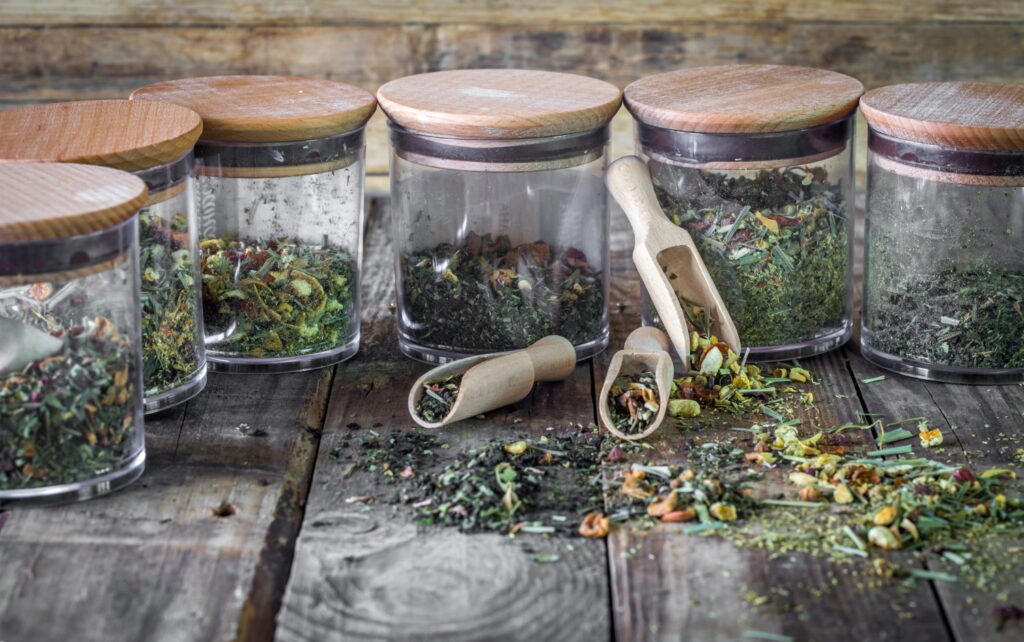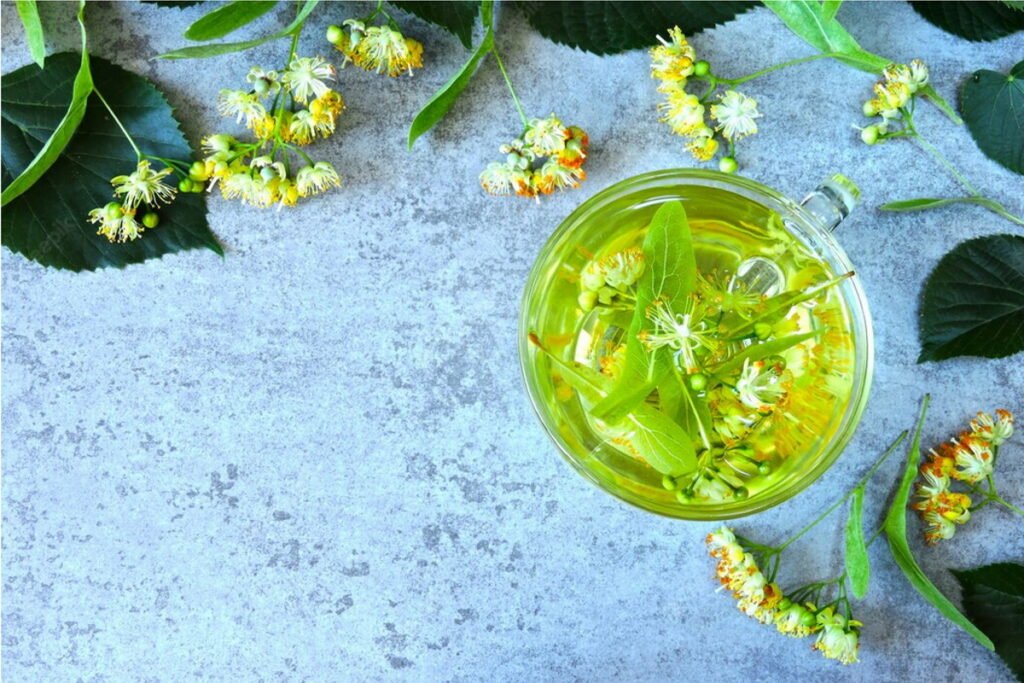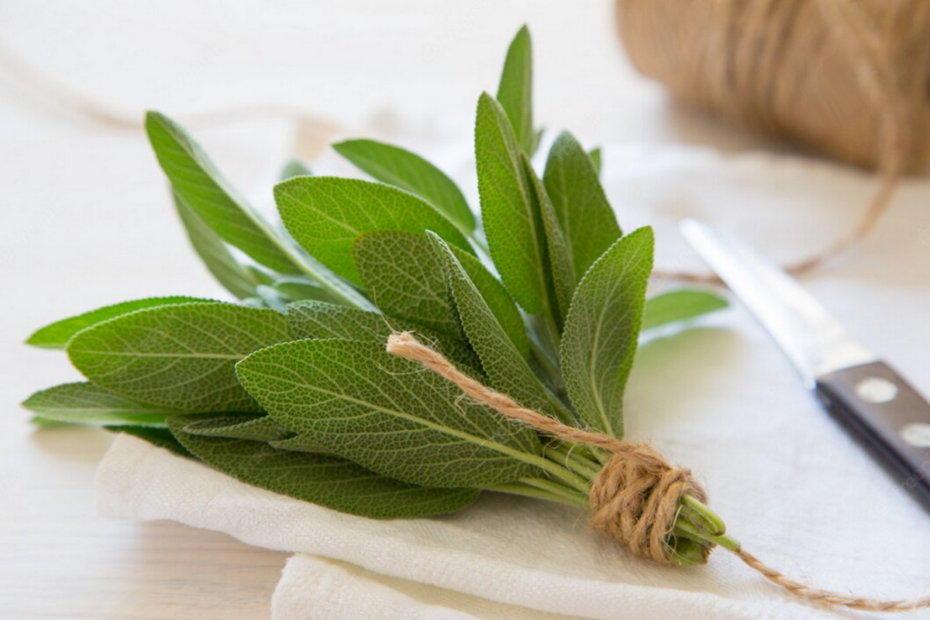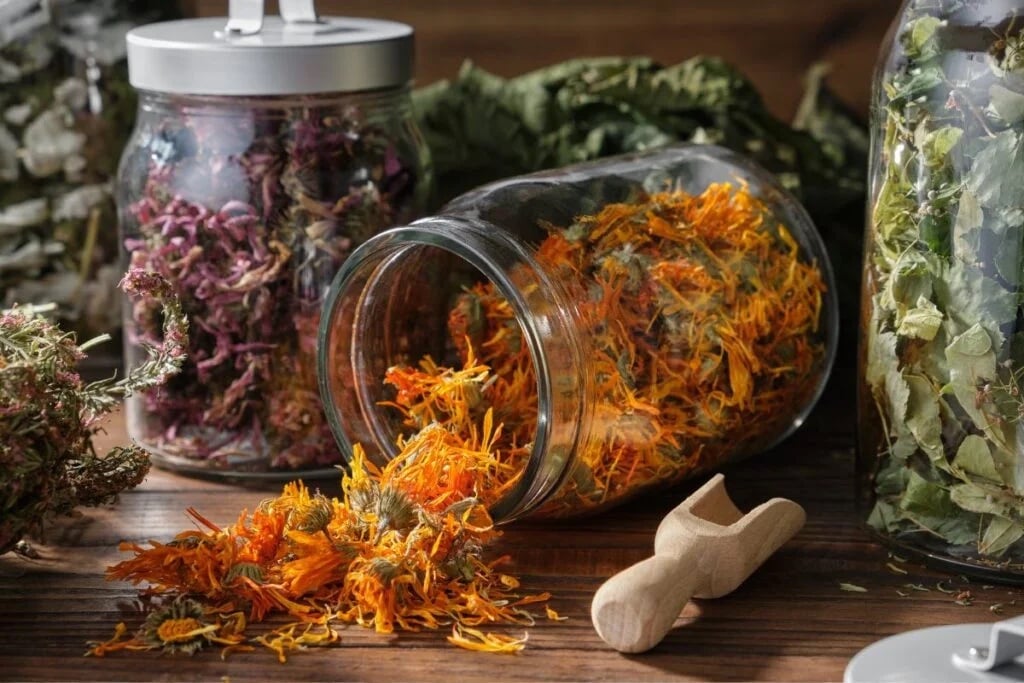The sage (Salvia) genus includes perennial herbs and is a part of the Lamiaceae family. It is the genus with the highest species number in this family. There are about 920 species of Salvia, but the most suitable for therapeutic purposes is the common sage. This plant’s raw material is used to make sage tea. Furthermore, sage tea benefits bring myriad medicinal possessions.
Sage (Salvia officinalis) is a semi-shrub in the Lamiaceae family, native to the Mediterranean region. It is a perennial herbaceous plant with a woody, branched stem 50–100 cm tall. This plant has elongated and wrinkled, with a grayish-green underside leaves. Sage blooms in June–July with small, blue-purple flowers and ripens into round, black nuts in September.
People grow sage in some countries, and this plant has an easy-growing reputation. You can grow sage in your garden and enjoy fresh leaves all summer for garnishing food and tea.
Medicinal and Health Benefits of Sage Tea
In phytotherapy, medicinal sage is one of the most popular plants. People use sage for inhalations, mouth and throat rinses, and medicinal tea blends. The plant contains vitamins, minerals, and many biologically active compounds. These include gums and resins, camphor, fruit acids, tannins, alkaloids, salvenes, flavonoids, and phytoncides.
Sage has long been known as a healing herb with a fragrant essential oil. Leaves mainly concentrates this oil and contains the natural antibiotic salvin, which gives the plant antiseptic properties.
Sage tea benefits in the treatment of various ailments:
- Disinfectant suppresses inflammation and damage to the body (skin, oral mucosa, stomatitis, angina).
- It relieves tonsillitis, coughs, and respiratory symptoms. Gargle with sage decoction if you have sore throats, and steam or inhale the decoction to relieve breathing.
- It helps with radiculitis and osteoporosis.
- Sage helps with hair loss.
- Lowers blood pressure and heart tone.
- It helps with insomnia, depression, and performance. Sage cleans and stimulates the circulatory system and balances the nervous system.
- Normalizes appetite and improves digestion.
- In general, it strengthens the immune system and speeds up recovery from illness.
- Improves memory.
- Sage helps to regulate body temperature in the fight against excessive sweating. You can soak excessively sweaty hands and feet in a sage decoction. Also, use dried, chopped sage leaves as a seasoning, and drink sage tea.
- It helps in the fight against harmful habits such as caffeine, alcohol, cigarettes, and drugs. These substances disrupt the body’s functioning by affecting the nervous and circulatory systems.
Sage root decoction heals rheumatoid arthritis, mastitis, dysmenorrhoea, and inflammation of the lymph nodes.

Sage As A Spice
The fragrant sage leaves are suitable for seasoning fish, canned foods, alcoholic beverages, and concentrates. Sage adds a spicy aroma and a bitter taste to food, making it versatile in sauces, soups, meat products, and steaks. It enhances the flavor of pork, game meat, eggs, and poultry dishes.
Sage Is A Sacred Herb for Women
Sage helps to regulate the menstrual cycle, relieves pain, and helps overcome thrush. It contains specific phytohormones similar in composition to the female sex hormone estrogen, making it a highly effective means of promoting conception. Phytohormones are remarkably analogous to the human hormone estrogen. That’s why people use it to treat infertility, even though scientists haven’t proved its effects.
Sage seed tea gives women a sense of passion. In ancient Egypt, when the demographic situation worsened after wars or epidemics, women were obliged to season their food with sage and drink sage tea. They believed sage stimulates a higher birth rate and restores the demographic balance.
Sage Leaf Tea for Women
Women over 35 are advised to take sage tea several times a year in the morning to rejuvenate the body, improve the general state of the body, and strengthen immunity. The preparation: put sage leaves in a cup (use either whole leaves, chopped leaves, or just tea bags bought in a shop or pharmacy), cover it with boiling water and let it steep until the tea gets cold. Drink the tea 30–40 minutes before meals.
This sage tea is recommended for getting pregnant. Steep one teaspoon of sage leaves in boiling water in a standard-size cup. Take 2 teaspoons twice a day: in the morning before breakfast and in the evening before going to bed for 11 consecutive days after the end of menstruation. If you do not get pregnant within 3 months, take a 2-month break and repeat.

Sage and Linden Tea for Passionate
This herbal duo of sage and linden blossom, rich in phytohormones, gives both men and women a passionate boost to their libido.
Steep 1/3 teaspoon of sage leaves and 2/3 teaspoon of linden blossom leaves in a pot of boiling water and steep until slightly warm. You can flavor it with lemon or honey.
Sage Tea “Vitamin Bomb”
You need:
- 1 teaspoon each of chopped sage leaves and chopped mint or nettle leaves
- 1 teaspoon each of fresh, dried, or frozen berries: blueberries, lingonberries, cranberries, and rose hips
- 2 walnuts (4-5 walnut halves)
- Honey or another sweetener to taste
- 4 glasses of water
Method of preparation:
- Crush the walnuts (with a knife or in a mortar).
- Mix the ingredients, put everything in a saucepan, and cover with water.
- Boil the tea, immediately remove it from the heat, and let it cool. You can strain it and add honey.
Sage Tea Benefits for Skin and Hair
You can rehabilitate dry, sagging, acne-prone skin by applying compresses. Mix 1 teaspoon each of sage leaves with lime and chamomile flowers. Cover with 1 cup (250 ml) of water and boil for a few minutes. Use only cool decoctions. Leave the compress on for 15-20 minutes, and do not rinse or wipe it off; leave it to dry.
Use the sage decoction compress for oily skin. Add 2 tablespoons of sage leaves to a glass of boiling water. Let it cool. Leave the compress on for 15–20 minutes. No need to rinse or wipe it off; leave it to dry naturally.
Sage also helps with hair loss. Rinse, wash, and dry your hair with a strong sage decoction. Use 2 tablespoons of sage leaves and a glass of boiling water to make the decoction. If you have long and luxuriant hair, use a double-strength decoction. There is no need to rinse the dried hair.
Possible Side Effects of Sage Tea
- Sage tea is one of the most dangerous teas for pregnant women and should never be used during pregnancy, as it can cause cramps and premature birth.
- Even for healthy people, it is essential not to consume too much sage, as it can cause allergic reactions and poisoning in large doses.
- Caution should be exercised when using sage if you have hay fever in the spring or are allergic to other herbs. They are also likely to be allergic to sage tea.
- Children are not recommended to drink sage tea. The decoction can only be used externally for medicinal purposes.
Sources:
- https://www.thespruceeats.com/history-of-sage-1807657
- https://theherbalacademy.com/sage-throughout-the-ages/
- https://www.biodiversitylibrary.org/item/185391
Associative photos from © Freepik.

